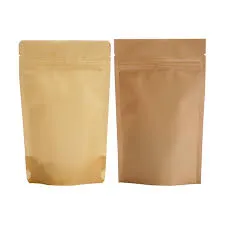- Afrikaans
- Albanian
- Amharic
- Arabic
- Armenian
- Azerbaijani
- Basque
- Belarusian
- Bengali
- Bosnian
- Bulgarian
- Catalan
- Cebuano
- chinese_simplified
- chinese_traditional
- Corsican
- Croatian
- Czech
- Danish
- Dutch
- English
- Esperanto
- Estonian
- Finnish
- French
- Frisian
- Galician
- Georgian
- German
- Greek
- Gujarati
- haitian_creole
- hausa
- hawaiian
- Hebrew
- Hindi
- Miao
- Hungarian
- Icelandic
- igbo
- Indonesian
- irish
- Italian
- Japanese
- Javanese
- Kannada
- kazakh
- Khmer
- Rwandese
- Korean
- Kurdish
- Kyrgyz
- Lao
- Latin
- Latvian
- Lithuanian
- Luxembourgish
- Macedonian
- Malgashi
- Malay
- Malayalam
- Maltese
- Maori
- Marathi
- Mongolian
- Myanmar
- Nepali
- Norwegian
- Norwegian
- Occitan
- Pashto
- Persian
- Polish
- Portuguese
- Punjabi
- Romanian
- Russian
- Samoan
- scottish-gaelic
- Serbian
- Sesotho
- Shona
- Sindhi
- Sinhala
- Slovak
- Slovenian
- Somali
- Spanish
- Sundanese
- Swahili
- Swedish
- Tagalog
- Tajik
- Tamil
- Tatar
- Telugu
- Thai
- Turkish
- Turkmen
- Ukrainian
- Urdu
- Uighur
- Uzbek
- Vietnamese
- Welsh
- Bantu
- Yiddish
- Yoruba
- Zulu
pvc plastic material
The Significance of PVC Plastic Material in Modern Applications
PVC, or polyvinyl chloride, is one of the most widely used synthetic plastic polymers in the world. It is a versatile material that can be found in a multitude of applications, ranging from construction to healthcare, automotive to consumer goods. With its unique properties, PVC has established itself as a material of choice for both manufacturers and consumers.
The Composition and Characteristics of PVC
PVC is created through the polymerization of vinyl chloride monomers. The resulting polymer can be produced in several forms, including rigid and flexible variants. Rigid PVC is often utilized in applications like pipes, doors, and window frames, while flexible PVC is commonly used in flooring, wiring, and medical devices.
One of the most appealing features of PVC is its durability. It is resistant to environmental factors such as moisture, chemicals, and UV light, making it suitable for a wide range of outdoor applications. Furthermore, PVC has excellent electrical insulation properties, which is why it is frequently used in wiring and cabling applications.
Applications in Construction
In the construction industry, PVC has revolutionized several practices due to its affordability and dependable performance. PVC pipes are a staple for plumbing systems, offering a lightweight yet strong alternative to traditional materials like metal. Not only do they resist corrosion, but they also last longer and require less maintenance.
Additionally, PVC roofing materials and siding are popular choices among homeowners and builders alike. These materials are not only cost-effective but also provide excellent thermal insulation, contributing to energy efficiency in buildings. In recent years, the trend towards sustainable construction has further boosted the popularity of PVC, as it can be recycled and repurposed.
pvc plastic material

Impact on Healthcare
Another significant area where PVC excels is in the healthcare sector. Medical devices such as IV bags, tubing, and containers often utilize flexible PVC due to its biocompatibility and ease of sterilization. The use of PVC in healthcare has not only simplified the design of these products but has also improved patient safety. Its sterile qualities and resistance to chemical degradation ensure that medical instruments remain reliable and functional.
Moreover, the transparency of PVC allows for easy monitoring of fluids in medical applications, thus enhancing the overall efficiency of healthcare delivery. The material’s adaptability also enables the production of custom-designed medical products tailored to specific patient needs.
Advancements in Sustainable Practices
While PVC has numerous advantages, there have been concerns regarding its environmental impact, particularly in terms of lifecycle and recycling. However, advancements in technology and production methods are addressing these issues. Many manufacturers are now focusing on creating PVC products that are more environmentally friendly. For instance, the incorporation of additives that allow for easier recycling has become more common.
Moreover, the industry is increasingly looking towards circular economy principles, aiming to reduce waste through recycling and the reprocessing of PVC materials. Organizations are developing 'closed-loop' systems where post-consumer PVC is collected, recycled, and used to produce new PVC products. As a result, this not only reduces reliance on virgin materials but also minimizes the carbon footprint associated with PVC production.
Conclusion
In conclusion, PVC plastic material plays a critical role in a variety of sectors, owing to its unique properties, versatility, and cost-effectiveness. Its applications in construction and healthcare exemplify its strength and reliability, while ongoing innovations in sustainable practices promise a more eco-friendly future for PVC products. As we continue to seek solutions that align with both consumer needs and environmental concerns, PVC stands out as a material that can adapt and evolve, ensuring its relevance in the rapidly changing marketplace. The ongoing research into improving PVC's sustainability will ultimately highlight its potential to contribute positively to our economy and the planet.













